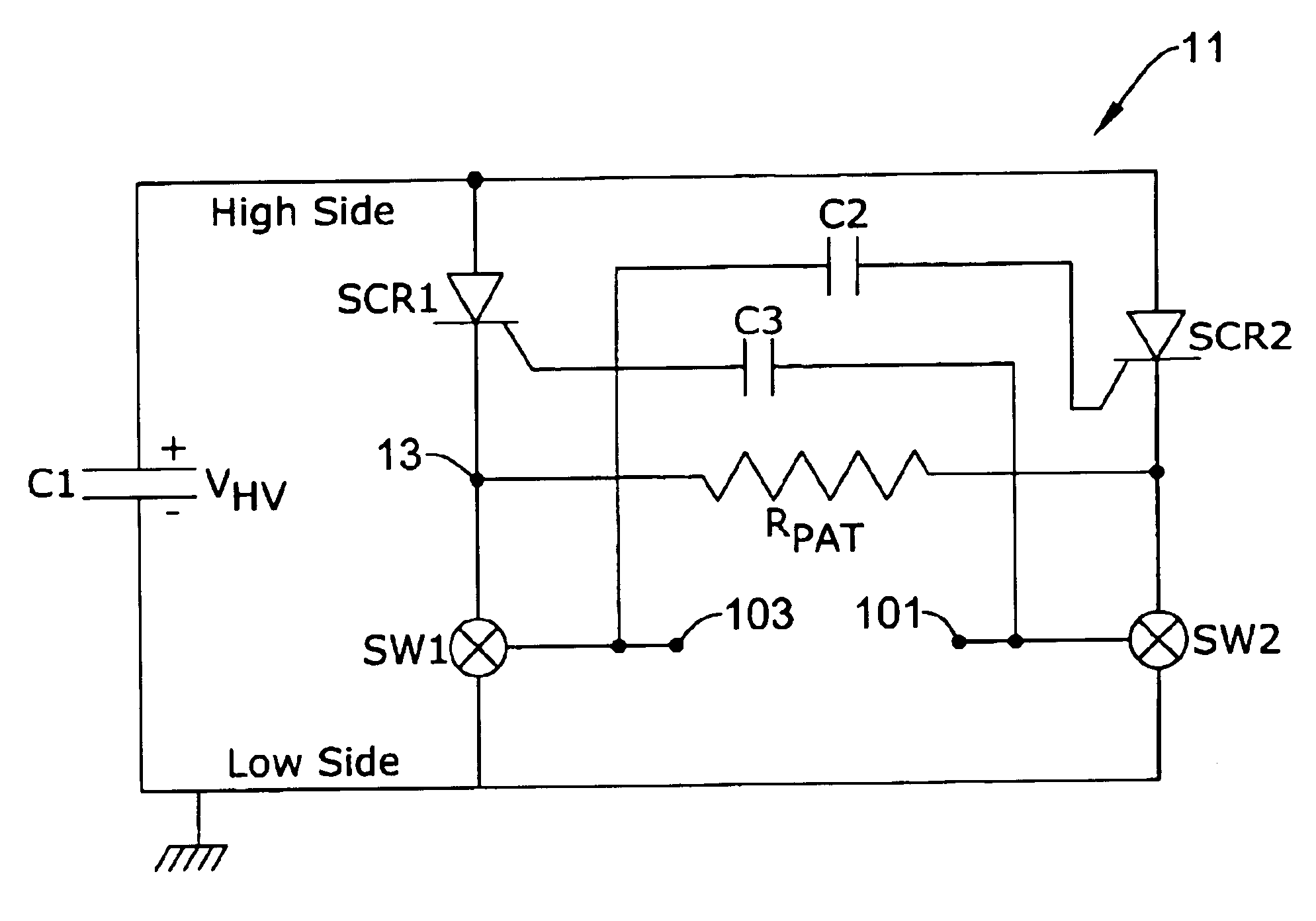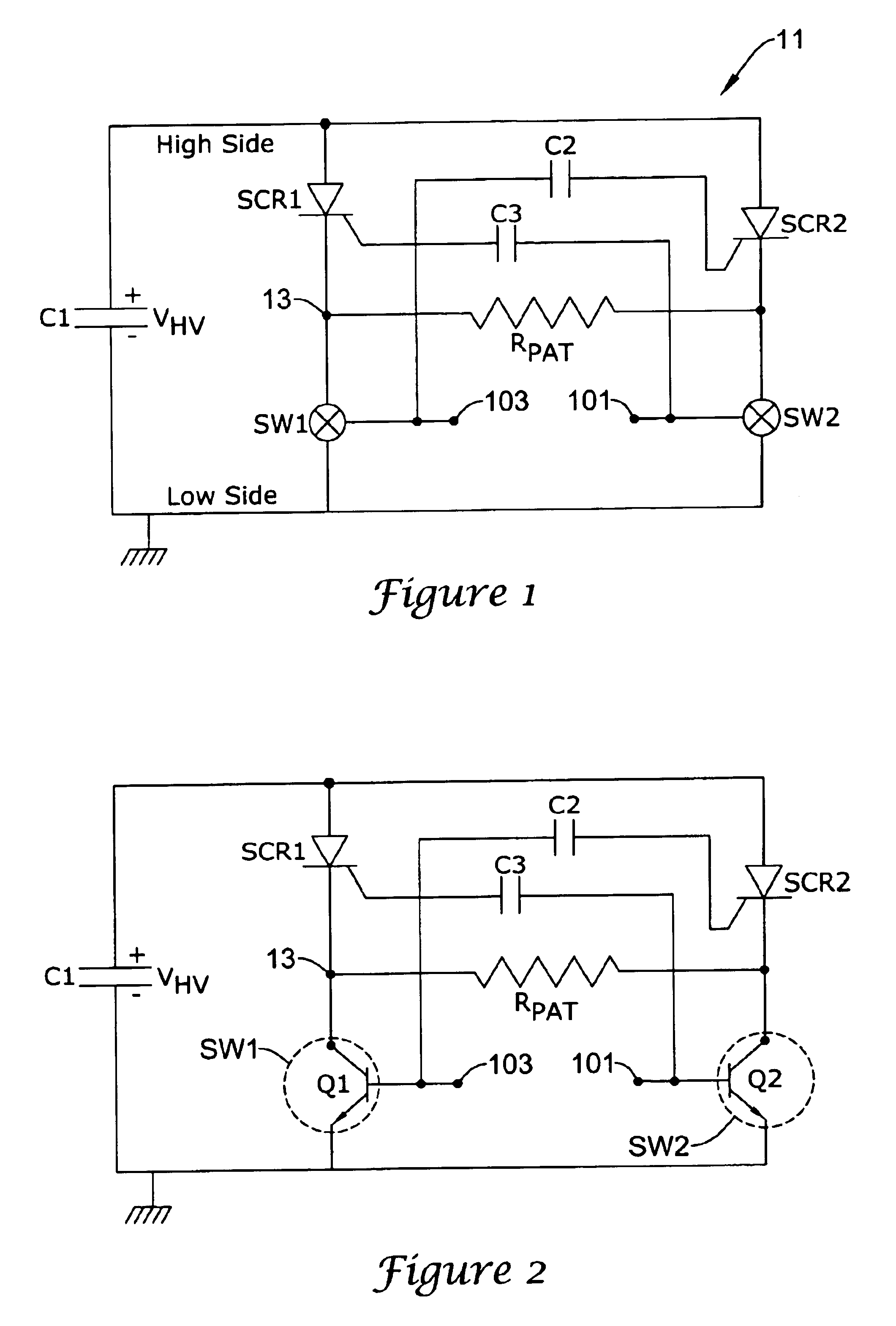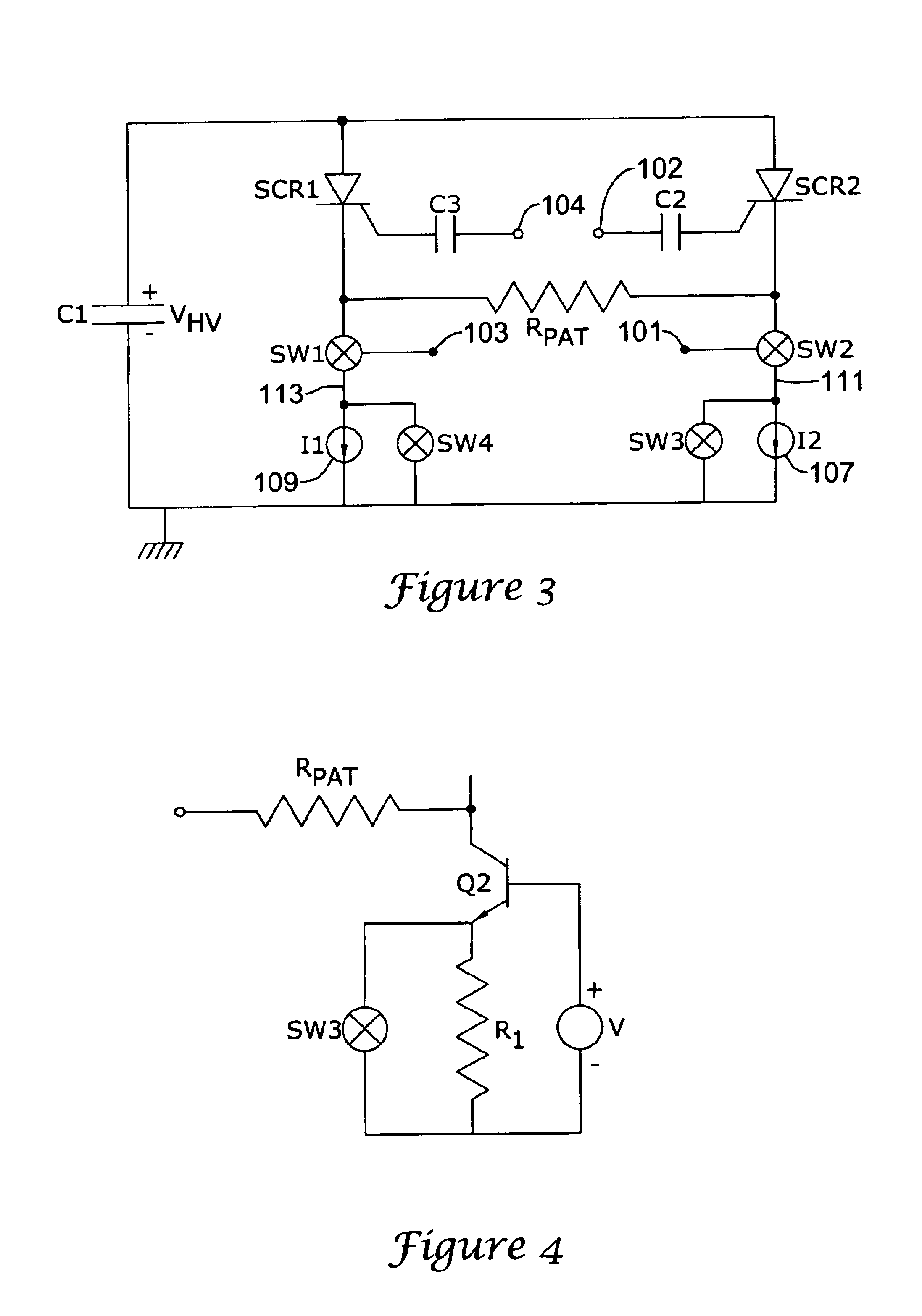Simplified defibrillator output circuit
a defibrillator and output circuit technology, applied in the field of electronic circuitry, can solve the problems of no practical use, no defibrillator used, and system use is far more complicated
- Summary
- Abstract
- Description
- Claims
- Application Information
AI Technical Summary
Benefits of technology
Problems solved by technology
Method used
Image
Examples
Embodiment Construction
[0019]FIG. 1 illustrates an electrical circuit including a first illustrative embodiment according to the invention. The circuit includes a high voltage capacitor C1 grounded at one terminal and connected at its opposite terminal to respective anodes of two silicon controlled rectifiers SCR1, SCR2.
[0020]The respective cathodes of the respective rectifiers SCR1, SCR2 are connected to respective first terminals of first and second low side switches SW1, SW2. The respective cathodes of the silicon controlled rectifiers SCR1, SCR2 are additionally electrically coupled to respective physical locations on a patient on either side of a patient resistance denoted RPAT.
[0021]The gate or trigger terminal of the first silicon controlled rectifier SCR1 is connected through a capacitor C3 to a first terminal 101 of the second switch SW2. The gate or trigger terminal of the second silicon controlled rectifier SCR2 is connected through a second capacitor C2 to the first terminal 103 of the first l...
PUM
 Login to View More
Login to View More Abstract
Description
Claims
Application Information
 Login to View More
Login to View More - R&D
- Intellectual Property
- Life Sciences
- Materials
- Tech Scout
- Unparalleled Data Quality
- Higher Quality Content
- 60% Fewer Hallucinations
Browse by: Latest US Patents, China's latest patents, Technical Efficacy Thesaurus, Application Domain, Technology Topic, Popular Technical Reports.
© 2025 PatSnap. All rights reserved.Legal|Privacy policy|Modern Slavery Act Transparency Statement|Sitemap|About US| Contact US: help@patsnap.com



